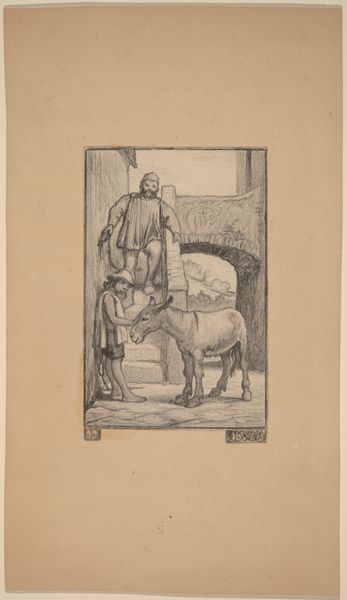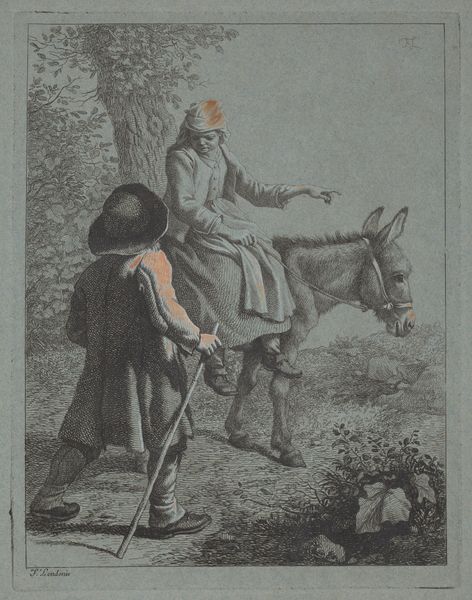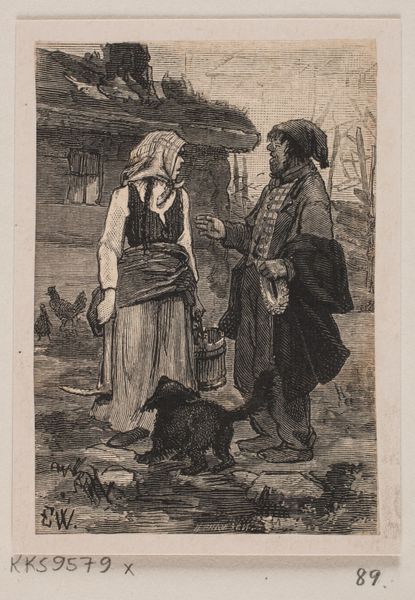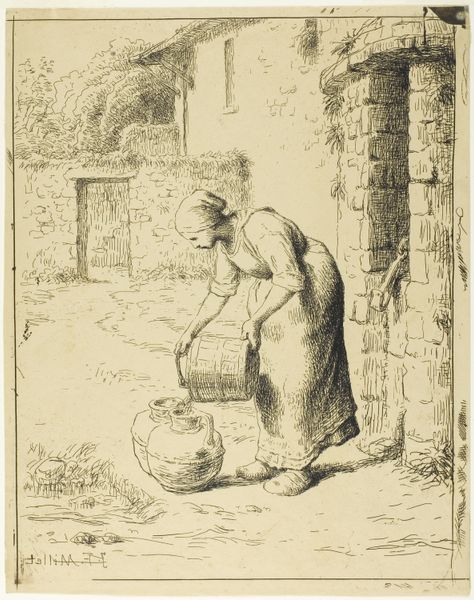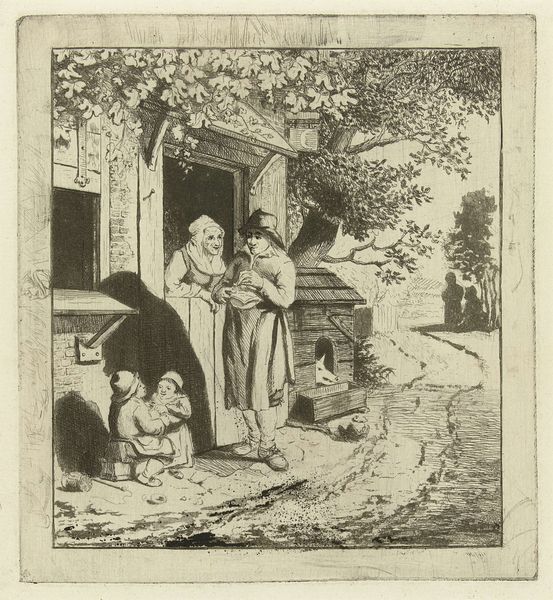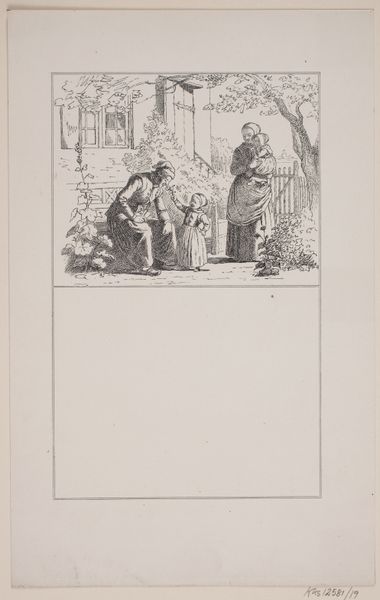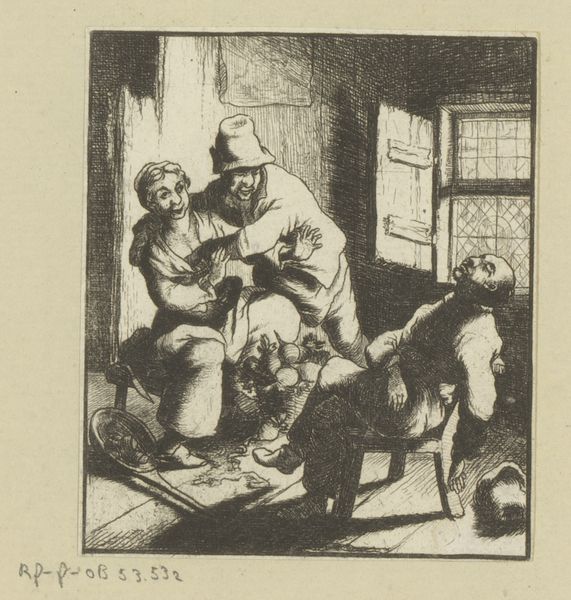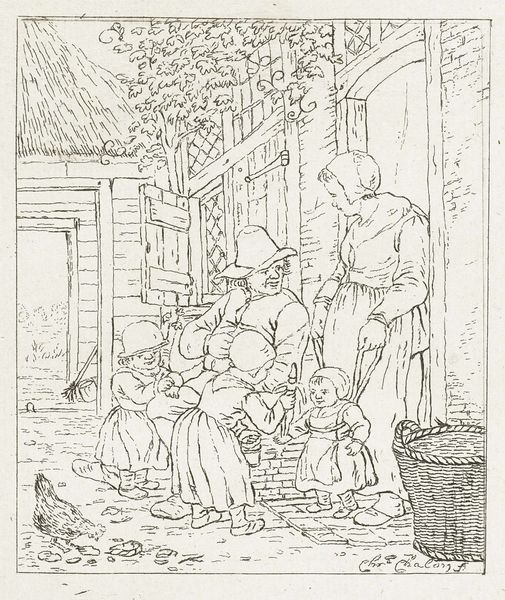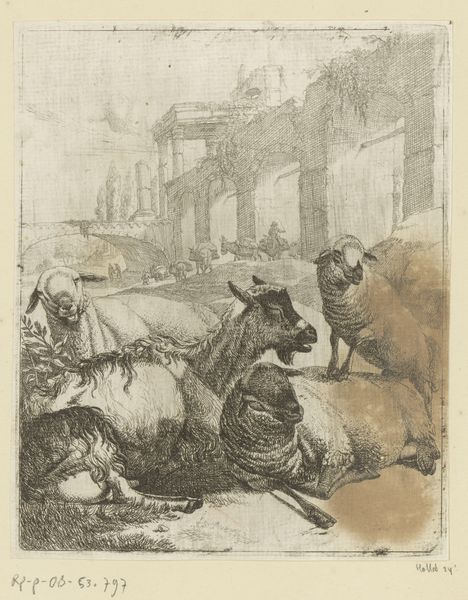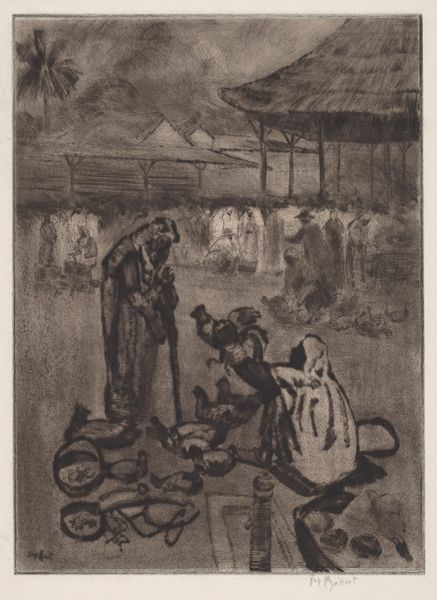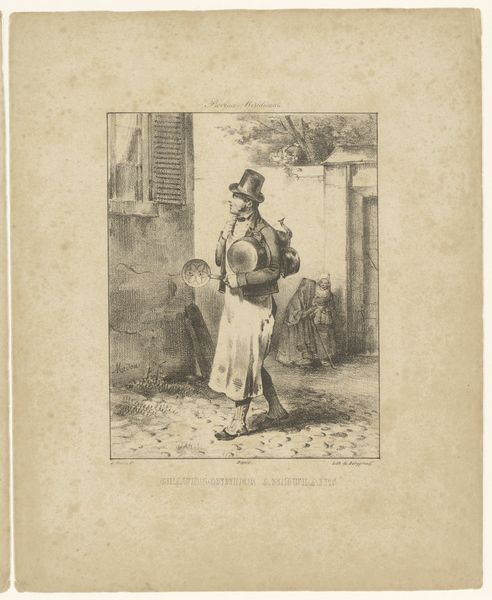
print, woodblock-print
# print
#
woodblock-print
#
orientalism
#
watercolor
Copyright: Public Domain: Artvee
Editor: This is "The Sacred Calf in the Bazaar at Agra" by Helen Hyde, a watercolor print from 1910. It feels very serene, but there's also something slightly unsettling about the calf with its back to us, positioned away from the human interaction in the piece. How would you interpret this work? Curator: Focusing on formal elements, notice how Hyde orchestrates visual balance through the asymmetrical arrangement of figures and architectural structures. The positioning of the calf, centrally placed yet averted, introduces a dynamic tension, subtly disrupting any expectation of narrative clarity. Editor: Dynamic tension, that's interesting! Can you explain that a bit more? Curator: Consider how the muted color palette enhances the work's contemplative mood, each shade deliberately chosen to contribute to a sense of spatial depth and atmospheric unity. How might the textural contrasts within the print affect your perception of the scene? Editor: I see. The smooth areas highlight the textured sections making them standout. The composition emphasizes the sacredness, right? Curator: Indeed. It's worthwhile to think about how the artistic process contributes meaning to the cultural theme and shapes how we read its symbolic aspects, what impact these choices might make on the overall interpretation. Editor: It’s fascinating to examine it through the artist’s style and structure. Curator: Precisely! And remember to explore other examples, broadening our comprehension to grasp art’s intrinsic values better!
Comments
No comments
Be the first to comment and join the conversation on the ultimate creative platform.
